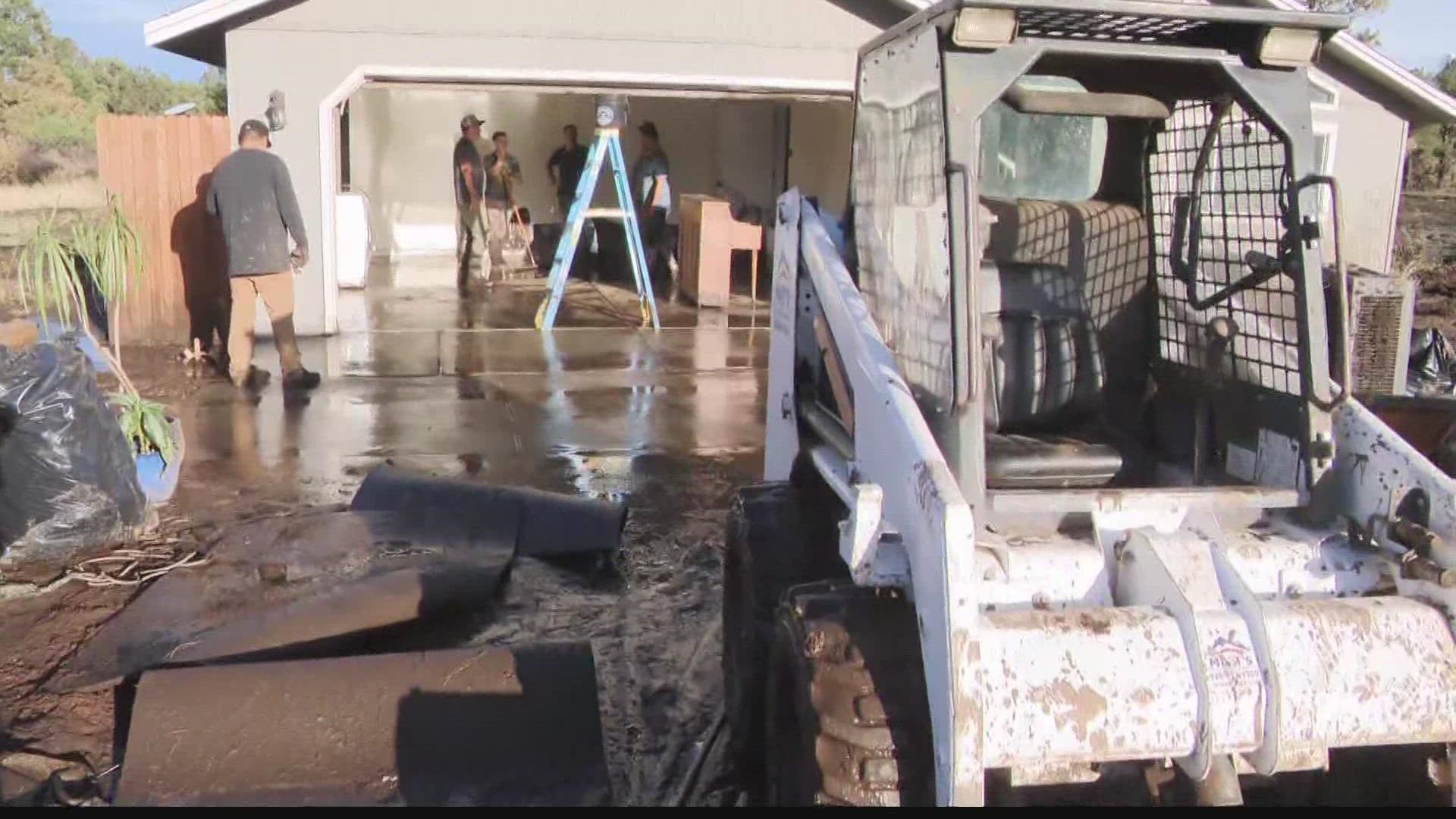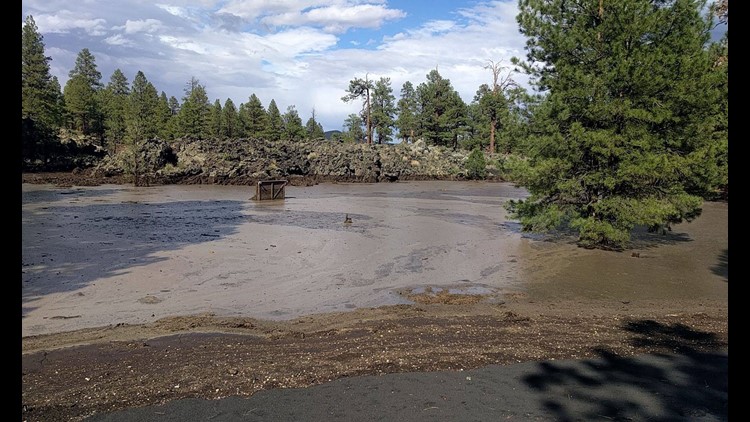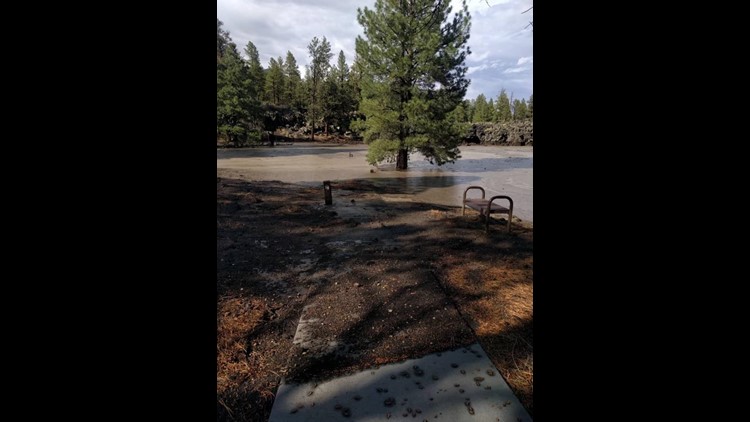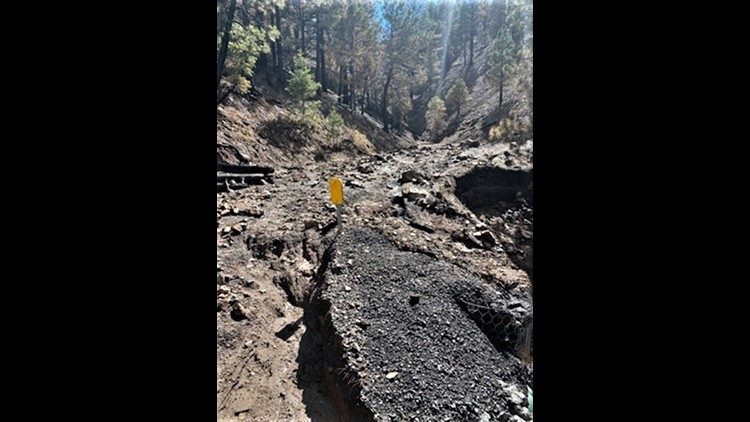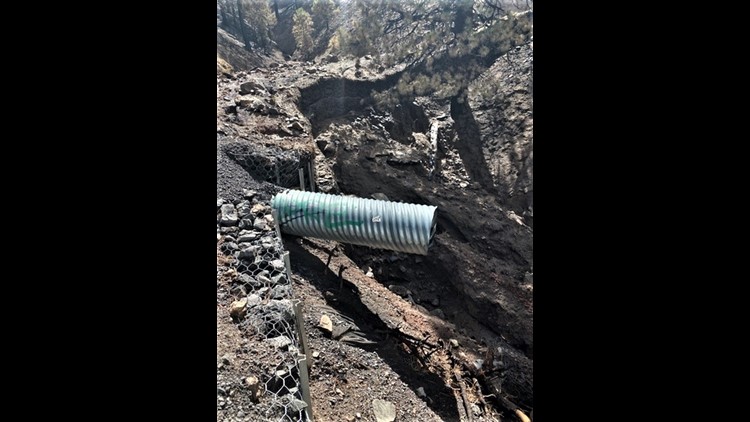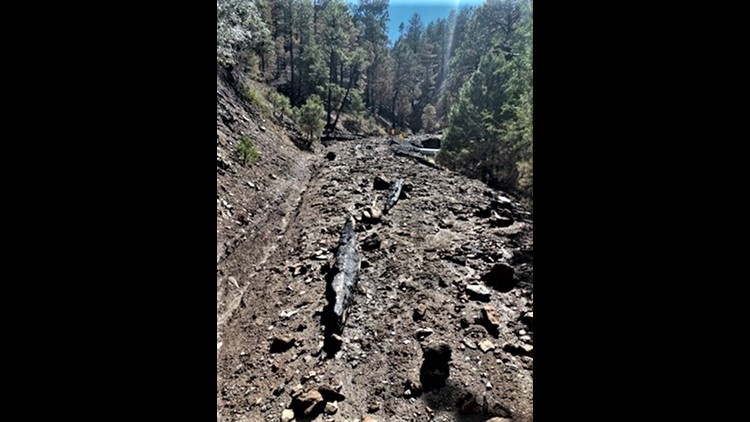FLAGSTAFF, Ariz. — Editor's note: The attached video is from a previously aired broadcast.
Wildfires like the Pipeline and Haywire fires in the Flagstaff area have left thousands of acres burnt and exposed to the elements. Monsoon is here, and with plants damaged and soil baked over, there's little in the way to stop a flood.
The U.S. Forest Service shared some photos of the floodwaters in the Coconino National Forest.
Photos emerge of post-fire floods
These photos, captured by Jon Wilson with the United States Forest Service, showcase the remnants of Sunday's flooding. Early reports suggest that almost half of Forest Road 552 was washed away.
In some spots, water is up to the tree branches. In others, erosion has cut deep enough to reveal the man-made infrastructure below.
Some of the erosion trenches are deep enough for a person to stand in.
If you're concerned about flooding, the Federal Emergency Management Agency (FEMA) maintains an interactive flood map that you can use to check the risk in your area.
Flooding is always intense after wildfires, but we can predict it, prepare for it, and be ready when it comes.
Arizona Weather
Drought, wildfires, heat and monsoon storms: Arizona has seen its fair share of severe weather. Learn everything you need to know about the Grand Canyon State's ever-changing forecasts here:
Flooding Safety:
The Arizona Fire & Medical Authority has provided the following tips on what hazards to watch out for during and after a flood, including fire, electrical and chemical safety:
Generators and alternative heating devices can create fire hazards during flooding if they aren’t used correctly or maintained properly. Pools of water and appliances can become electrically charged and can cause electrical fires.
On electricity, residents in flooded areas should turn off the power to their homes if they can reach the main breaker or fuse box. All wiring in the house may be electrically charged and hazardous. Residents should have a professional technician check their home for damages before turning on the power.
Make sure potentially combustible liquids like paint thinner, lighter fluid or gasoline haven’t spilled within or near your home. Keep combustible liquids away from electrical or alternative heat sources as to not start a fire.
All smoke alarms in the home should be tested monthly and batteries should be replaced yearly. Some smoke alarms are dependent on your home’s electrical service and may go out when power is turned off.
Make sure the fire hydrant near your home is cleared of debris so the fire department can assess it easily in the event of a fire.

